#women in the museum field
Text
I work at a museum with an (unintentionally) all women staff which is so nice but also WOW sometimes I forget how blatantly condescending men in the museum field can be
#museum curator#personal blog#lots of old white men in the history field!!!#vent#I posted a question in a museum forum and a man asked me if I know that swords shouldn't be displayed within reach of the public#????? sir thats just common sense#imposter syndrom#women in the museum field#history#its even harder bc im a non-gender confirming person#which is a whole different can of worms In this field#museum blog#museum#women#brickcollector
5 notes
·
View notes
Text
Do I ever go out with friends? No. Do I have a fulfilling romantic life? Also no. But do women in their 40s-50s instantly recognize my administrative potential in any given situation? Apparently.
#was I just born for nonprofit administration? I guess so#my life is weird#I’m not even 25 but middle to upper aged women in my field love me#museum musings
2 notes
·
View notes
Text
“The Mona Lisa is just a painting, it’s okay to paint over it to reuse it for a new painting, artists do that all time”
Now do y’all hear how stupid you sound when you say that it’s “just a dress, it’s meant to be worn.” It’s a historical garment. You wouldn’t abuse and destroy any other type of art so why are textiles any different?
#something about textiles being traditionally associated with womens work#and slave labour being used to produce textiles and fibres#all lead me to believe that the field of fashion and textiles is not taken seriously bc they weren’t white male industries#met gala#museum#textile conservation#fashion history#yes it’s days later and I’m still fuming bc I’m seeing awful takes from ppl who know nothing
7 notes
·
View notes
Text

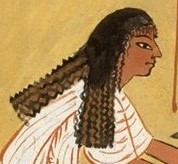


Sennedjem and Iineferti in the Fields of Iaru - Met Museum Collection
Note: This is a modern copy of an original
Inventory Number: 30.4.2
Original Dating: New Kingdom, Ramesside, Dynasty 19, ca. 1295–1213 B.C.
Location Information: From Egypt, Upper Egypt, Thebes, MMA Graphic Section, 1922; Original Deir el-Medina, Tomb of Sennedjem (TT 1), PM plan (9) I–IV
Description:
The east wall of Sennedjem's vaulted crypt is decorated with a vignette that illustrates spell number 110 in the Book of the Dead. Here, in a facsimile painted in the tomb, Sennedjem and his wife, Iineferti, are shown harvesting grain, sowing seeds, and pulling flax in the abundant fields of the next world.
#Sennedjem and Iineferti in the Fields of Iaru#new kingdom#ramesside#dynasty 19#upper egypt#thebes#deir el medina#deir el-medina#tomb of sennedjem#met museum#30.4.2#womens hair and wigs#NKRWHW
1 note
·
View note
Text
"It is certainly not realistic to hope that a majority of men, in the arts or in any other field, will soon see the light and find that it is in their own self-interest to grant complete equality to women, as some feminists optimistically assert, or to maintain that men themselves will soon realize that they are diminished by denying themselves access to traditionally "feminine" realms and emotional reactions. After all, there are few areas that are really "denied" to men, if the level of operations demanded be transcendent, responsible, or rewarding enough: men who have a need for "feminine" involvement with babies or children gain status as pediatricians or child psychologists, with a nurse (female) to do the more routine work; those who feel the urge for kitchen creativity may gain fame as master chefs; and of course, men who yearn to fulfill themselves through what are often termed "feminine" artistic interests can find themselves as painters or sculptors, rather than as volunteer museum aides or part-time ceramists, as their female counterparts so often end up doing; as far as scholarship is concerned, how many men would be willing to change their jobs as teachers and researchers for those of unpaid, part-time research assistants and typists as well as full-time nannies and domestic workers?"
-Linda Nochlin, Why Have There Been No Great Women Artists, 1971
1K notes
·
View notes
Note
I’m so sorry if you’ve already answered this somewhere, but how do you design your characters?
I’ve been trying to make an OC from the prohibition era and it turns out there’s basically nothing to work with for men’s outfits, so I’m curious how you made this many that look unique and fitting to the characters
There is so much to work with, though!
You will tend to find more of a focus on variety in women's fashion, but there is still quite a lot of menswear to ogle too.
I suppose it's just a matter of searching out ideas and inspiration in the rights corners. Here are a few suggestions:
Old Clothing Catalogues -
Collections from Sears-Roebuck and other popular clothing retailers are pretty easy to find compiled into relatively inexpensive books, or just floating online.
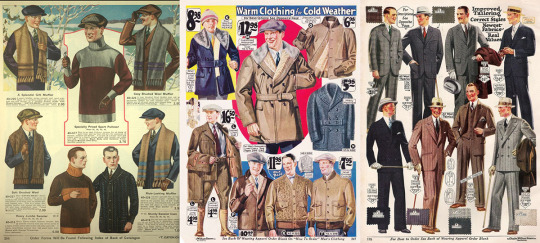
A fair bit of it is in the public domain now.
--Here's an entire 1922 catalogue of stuff to flip through.
-----------------
Contemporary Artwork -
Some phenomenal illustrators were working in this field amidst the "Golden Age of Illustration" and featured prominently on the covers of magazines and on the ads inside. There was a lot of emphasis on fashion.

Collier's and The Saturday Evening Post are a couple of the more prominent and easily searchable resources. The costuming on the cover art always has a lot of personality.
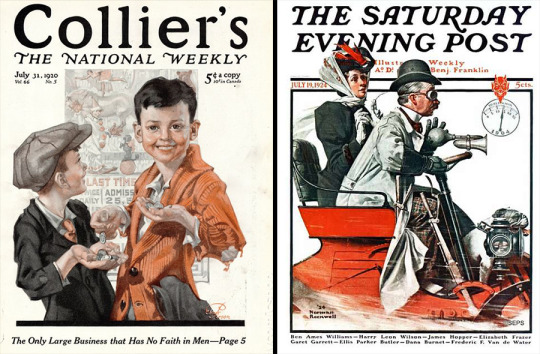
There's Rockwell, of course, and it's almost impossible to go wrong with J. C. Leyendecker. He's probably best known for his Arrow Collar ad art, but even his sock ads are like…
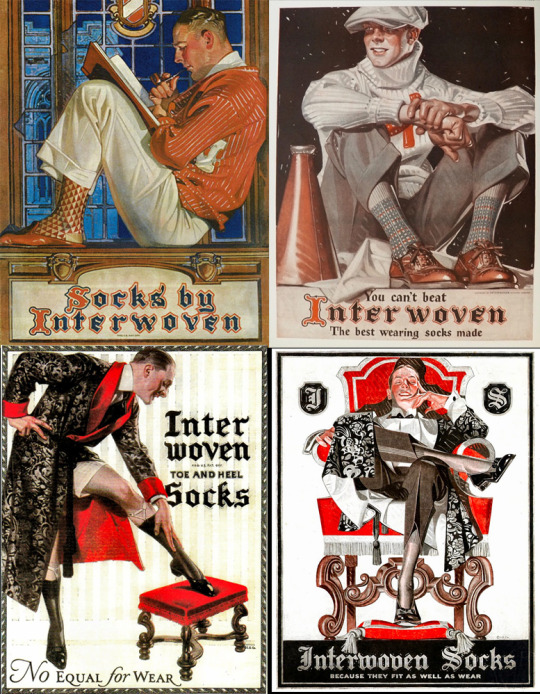
There were numerous other amazing and influential illustrators working at the time too. Here's a list of some of them.
Here's a bonus Henry Raleigh featuring some of his fabulously-dressed people.
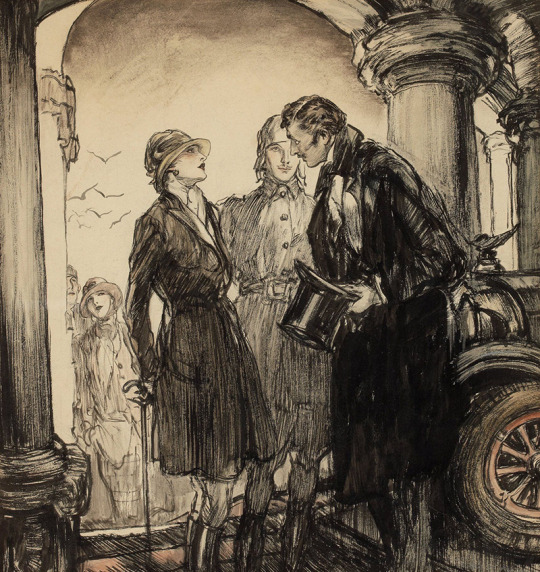
-----------------
Blogs and Articles -
There are so many of them!
If you want historical accuracy, be wary of write-ups pulling all of their references from film and television. There's nothing wrong with using those for inspiration if you aren't too concerned with historicity, but there are some pretty comprehensive and well-researched things out there with more of an eye on actual fashion history too:
--Gentleman's Gazette - What Men Really Wore in the 1920s
--The Fashionisto - 1920s Men's Fashion
-----------------
Digital Collections -
There are numerous digital historic image collections stemming from universities, museums, libraries, and the government that are free to peruse too.
--The Metropolitan Museum has a searchable catalog of exhibits that includes fashion and photos
--Here's some things from the New York Public Library
-----------------
Photos at Large -
If you aren't sure where to start, image searching for any of Hollywood's early celebrities will typically turn up a bevy of production stills and promotional photography featuring a variety of fashions.
Here's a random Getty images search for Harold Lloyd. A lot of standard 3 piece suits, but a lot of stuff with added character too.
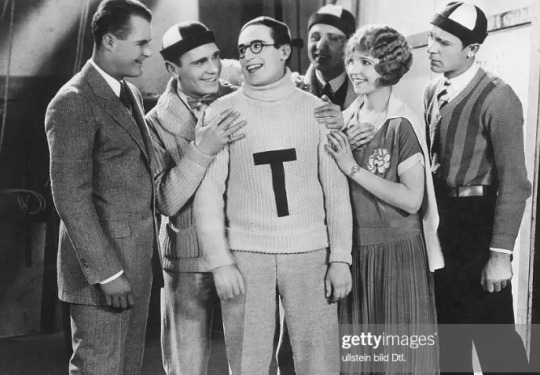
Photography was generally quite accessible by the 1920s, though, and you can find a lot of authentic photos of people from all walks of life, out in the wild wearing all sorts of clothes.
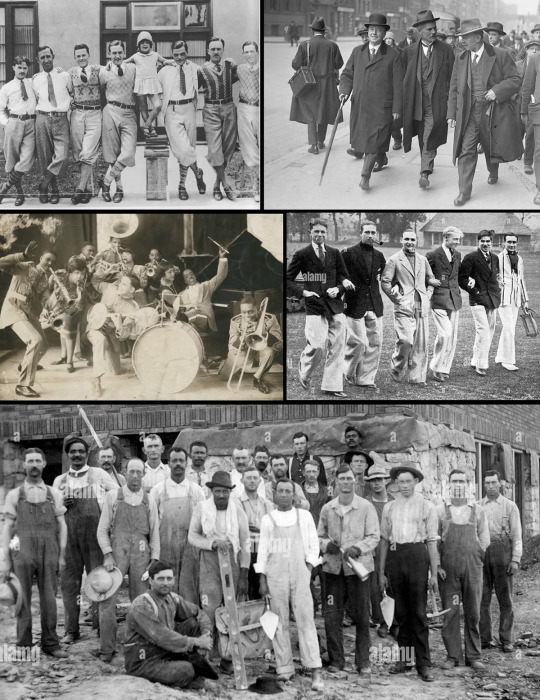
This is by no means the limit to the resources available, but hopefully it'll provide some leaping-off points for designing looks for your characters!
3K notes
·
View notes
Text
Pink is for Boys
"Pink or Blue? Which is intended for boys and which for girls? This question comes from one of our readers this month, and the discussion may be of interest to others. There has been a great diversity of opinion on this subject, but the generally accepted rule is pink for the boy and blue for the girl. The reason is that pink, being a more decided and stronger color, is more suitable for the boy, while blue, which is more delicate and dainty, is prettier for the girl." ~ The Infants' Department, June 1918


[Left: The Blue Boy, oil on canvas, c. 1770, by Thomas Gainsborough.
Right: The Pink Boy, oil on canvas, c. 1782, by Thomas Gainsborough.]
Pink is for girls and blue is for boys. But it hasn't always been this way. Colour coding infants as a way of denoting gender was popular in 20th century America. The problem? Pink and blue? Which is for boys and which is for girls?
In 1927 TIME Magazine asked ten of the "leading stores that sell baby equipment" which colour was for which gender. Four stores responded pink for girls and blue for boys; Macy's (Manhattan), Franklin Simon (Manhattan), Wanamaker's (Philadelphia) and Bullock's (Los Angeles). Five stores responded pink for boys and blue for girls; Best's (Manhattan), Marshall Field's (Chicago), Filene's (Boston), Maison Blanche (New Orleans) and The White House (San Francisco). Curiously Halle's (Cleveland) responded that pink was for both boys and girls.
This debate would continue and it wasn't until mid-20th century that pink for girls and blue for boys became firmly cemented in western culture.
However the idea of colour coding infants dates back to the 19th century. According to La cour de Hollande sous le règne de Louis Bonaparte in 1808 in Holland pink was used to announce the birth of a girl and blue a boy. In March 1856 Peterson's Magazine (Philadelphia, USA) advises that the ribbon on a christening cap should be blue for a boy and pink for a girl. On the 23rd of July 1893 the New York Times writes that for baby clothes it's "pink for a boy and blue for a girl!"

[The Oddie Children, oil on canvas, c. 1789, by William Beechey, via North Carolina Museum of Art.]
During the latter half of the 18th century one of the most popular outfits for young children, regardless of gender, was a white dress with a coloured sash tied around the waist. Pink and blue being the most popular colours, although other colours were worn as well. It would be tempting to assume that the colour of the sash indicated gender but there isn't clear evidence that this was the case. The Oddie Children (above) depicts Sarah, Henry, Catherine, and Jane Oddie. The three girls are all wearing white dresses; two with a blue sash one with a pink sash. We also see Henry Russell (bellow left) wearing a blue sash and Prince William (bellow right) wearing a pink sash.
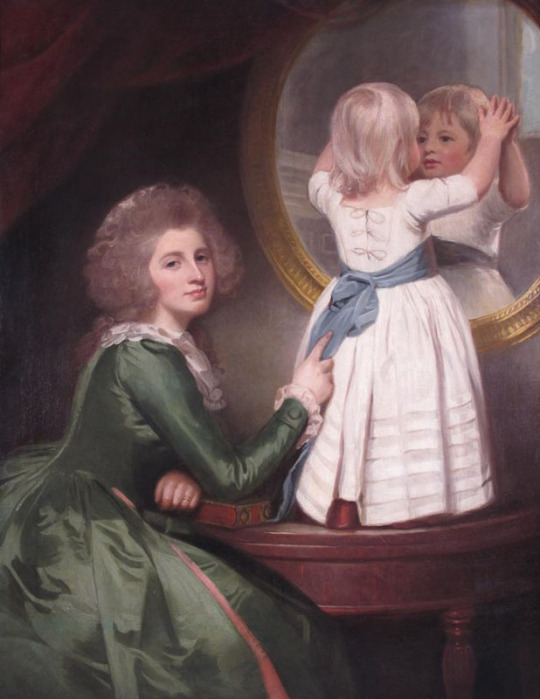
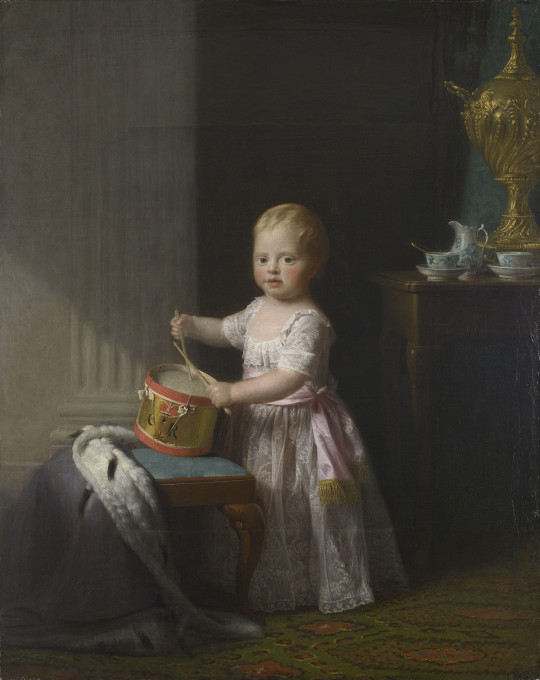
[Left: Anne Barbara Russell née Whitworth with her son Sir Henry Russell, oil on canvas, c. 1786, by George Romney, via Woolley & Wallis.
Right: Prince William, oil on canvas, c. 1767, by Allan Ramsay, via the Royal Collection Trust.]
Pink was just one of the many colours popular in 18th century English womenswear and seems to have stayed popular throughout the century. On the 3rd of January 1712 The Spectator published an article in which a man recalls seeing "a little Cluster of Women sitting together in the prettiest coloured Hoods that I ever saw. One of them was Blew, another Yellow, and another Philomot; the fourth was of a Pink Colour, and the fifth of a pale Green". On the 1st of May 1736 the Read's Weekly Journal, or British Gazetteer reports that the ladies attending the royal wedding wore gowns of "Gold stuffs, or rich Silks with Gold or Silver Flowers, or Pink or White Silks, with either Gold or Silver Netts or Trimmings;" shoes either "Pink, White or Green Silk, with Gold or Silver Lace and braid all over." On the 24th of May 1785 Charles Storer writes to Abigail Adams advising that fashionable colours in English court dress are "pink, lilac, and blue" such "as is worn at Versailles".
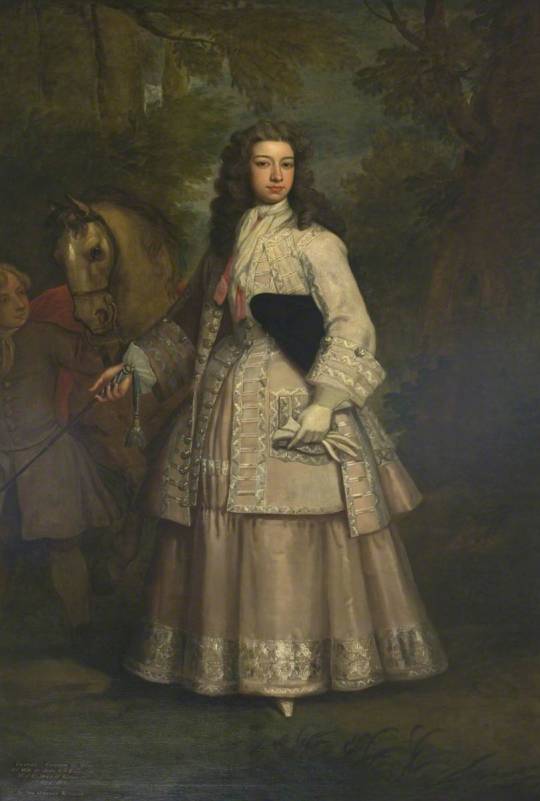
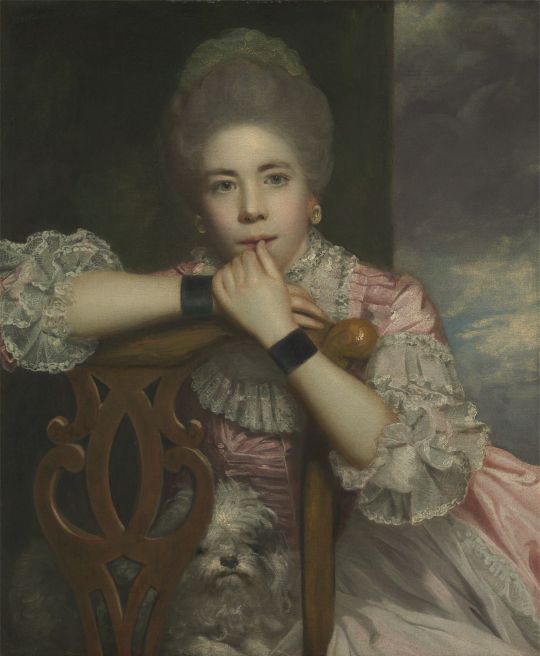
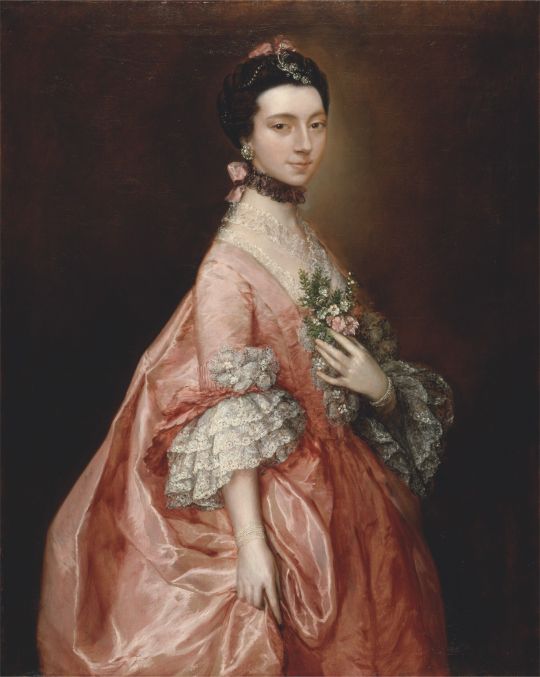
[Left: Frances, Daughter of Evelyn Pierpont, 1st Duke of Kingston, oil on canvas, c. 1700-23, by Godfrey Kneller, via Art UK.
Middle: Mrs. Abington as Miss Prue in "Love for Love" by William Congreve, oil on canvas, c. 1771, by Sir Joshua Reynolds, via Yale Center for British Art.
Right: Mary Little, later Lady Carr, oil on canvas, c. 1765, by Thomas Gainsborough, via Yale Center for British Art.]
In particular pink was popular amongst young women as the colour was associated with youth. Older women who wore pink were mocked as vain for dressing in a way that was seen as improper for their age. On the 31st of January 1754 Lady Jane Coke writes to Mrs. Eyre criticising old women who wear pink:
As for fashions in dress, which you sometimes inquire after, they are too various to describe. One thing is new, which is, there is not such a thing as a decent old woman left, everybody curls their hair, shews their neck, and wears pink, but your humble servant. People who have covered their heads for forty years now leave off their caps and think it becomes them, in short we try to out-do our patterns, the French, in every ridiculous vanity.
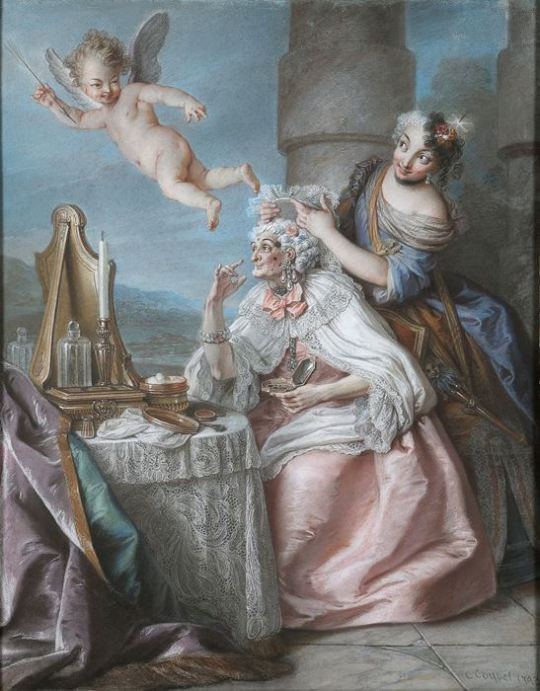
[Folly Embellishing Old Age With the Adornments of Youth, oil on canvas, c. 1743, by Charles-Antoine Coypel, via Master Art.]
For Englishmen acceptable clothing way much more limited. In A Foreign View of England in the Reigns of George I & George II Monsieur César de Saussure writes that Englishmen "do not trouble themselves about dress, but leave that to their womenfolk". He explains:
Englishmen are usually very plainly dressed, they scarcely ever wear gold on their clothes; they wear little coats called "frocks," without facings and without pleats, with a short cape above. Almost all wear small, round wigs, plain hats, and carry canes in their hands, but no swords. Their cloth and linen are of the best and finest. You will see rich merchants and gentlemen thus dressed, and sometimes even noblemen of high rank, especially in the morning, walking through the filthy and muddy streets.
César de Saussure warns that "a well-dressed person in the streets, especially if he is wearing a braided coat, a plume in his hat, or his hair tied in a bow, he will, without doubt, be called "French dog" twenty times perhaps before he reaches his destination" and is not only at risk of "being jeered at" but also "being bespattered with mud, but as likely as not dead dogs and cats will be thrown at him."
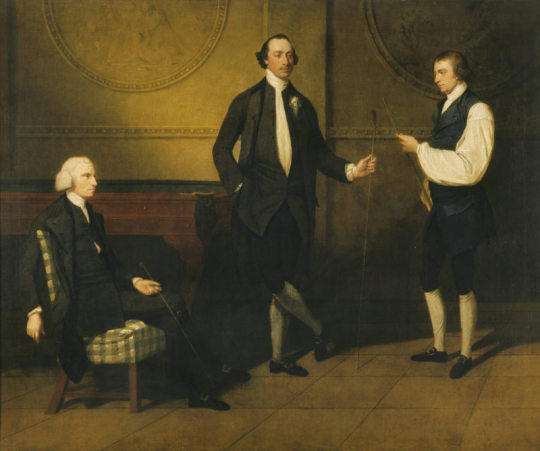
[Reverend Charles Everard Booth, Captain Griffith Booth, and an Unidentified Man playing Billiards, oil on canvas, c. 1775-9, by John Hamilton Mortimer, via the Royal Collection Trust.]
For Englishmen dressing "plainly" mostly meant wearing blacks and browns. In his book on macaroni, Pretty Gentleman, Peter McNeil found that in contrast most English menswear that he describes as generally consisting of "monochrome broadcloth" macaroni wore a variety of colours including green, orange, yellow, violet, red, white, blue, gold, silver and of course pink.
But it's not just the macaroni of the 1770s & 1780s that wore pink. We see pink in descriptions of feminine men's dress (both real and fictional) throughout the 18th century.
On the 2nd of June 1722 Sarah Osborn writes to Robert Byng:
I believe the gentlemen will wear petticoats very soon, for many of their coats were like our mantuas. Lord Essex had a silver tissue coat, and pink color lutestring waistcoat, and several had pink color and pale blue paduasoy coats, which looked prodigiously effeminate.
On the 18th of October 1729 the Universal Spectator and Weekly Journal published a story where an "effeminate" man's clothes were described as follows:
He had a flower'd pink-colour Silk Coat, with a Green-Sattin Waistcoat lac'd with Silver. Velvet Breeches, Clock'd Stockings the Colour of his Coat, Red-heel'd Pumps, a Blue Ribbon at the Collar of his Shirt, and his Sword-Hilt he embrac'd under the Elbow of his Left Arm,

[Sir Miles Stapylton, 4th Bt of Myton, oil on canvas, c. 1730-35, via Art UK.]
In The Adventures of Roderick Random (1748) the effeminate (and queer coded) Captain Whiffle is described as follows:
our new commander came on board in a ten-oared barge, overshadowed with a vast umbrella, and appeared in everything the reverse of Oakum, being a tall, thin young man, dressed in this manner: a white hat, garnished with a red feather, adorned his head, from whence his hair flowed upon his shoulders, in ringlets tied behind with a ribbon. His coat, consisting of pink-coloured silk, lined with white, by the elegance of the cut retired backward, as it were, to discover a white satin waistcoat embroidered with gold, unbuttoned at the upper part to display a brooch set with garnets, that glittered in the breast of his shirt, which was of the finest cambric, edged with right Mechlin: the knees of his crimson velvet breeches scarce descended so low as to meet his silk stockings, which rose without spot or wrinkle on his meagre legs, from shoes of blue Meroquin, studded with diamond buckles that flamed forth rivals to the sun! A steel-hilted sword, inlaid with gold, and decked with a knot of ribbon which fell down in a rich tassel, equipped his side; and an amber-headed cane hung dangling from his wrist. But the most remarkable parts of his furniture were, a mask on his face, and white gloves on his hands, which did not seem to be put on with an intention to be pulled off occasionally, but were fixed with a curious ring on the little finger of each hand.

[Henry Ingram, 7th Viscount Irwin and His Wife Anne, oil on canvas, c. 1745, by Philippe Mercier, via Art UK.]
On the 28th of July 1780 the London Courant reports:
A few days ago, a Macaroni made his appearance in the Assembly-room at Whitehaven, in the Following dress: a mixed silk coat, pink sattin waistcoat and breeches, covered with an elegant silver nett, white silk stockings with pink clocks, pink sattin shoes and large pearl buckles, a mushroom coloured stock, covered with a fine point lace; his hair dressed remarkably high, and stuck full of pearl pins.
On the 6th of August 1792 The Weekly Entertainer published Sketches and Portraits form the Life by Simon Tueopnrastus which included the following description:
Mercator was a youth of some genius and expectation, but by a strange perverseness of disposition, notwithstanding the extreme natural stiffness of his limbs, he had acquired an early attachment to the most finical and effeminate finery; so that, while yet a boy, he would exhaust every expedient of a fertile invention to procure a laced waistcoat, or the most foppish toy; would dangle a watch-string, with brass seals, from each fob, at a time when the frugal care of his parents would not permit him to wear a watch in either; and would strut in a fine pair of second-hand pink silk breeches, and a light blue coat, with all the formal dignity of—a soldier upon the parade.


[Left: Thomas King in "The Clandestine Marriage", oil on canvas, c. 1792, by Samuel De Wilde, via Yale Center for British Art.
Right: Edward Payne, oil on canvas, by Arthur Devis, via Art UK.]
While pink is mentioned in these descriptions of feminine men's dress it's not singled out as the girl colour the way pink would become in the 20th century. I would argue pink is seen as effeminate not because pink is a uniquely feminine colour but because it was used in fashionable dress. In 18th century England being interested in fashion was seen as an frivolous female trait. Men who showed too much interest in fashion were mocked and ridiculed for their gender nonconformity. "A Man must sink below the Dignity of his Nature, before he can suffer his Thoughts to be taken up on so trivial an Affair, as the Chosing, Suiting, and Adjusting the Adornments of his Person," complains a letter published on the 8th of May 1731 in Read's Weekly Journal, or British Gazetteer:
Decency of Garb ought inviolably to be preserved; nor can there be possibly an Excuse for Dressing like a Merry-Andrew: Rich and coloured Silks are in themselves effeminate, and unbecoming a Man; as are, in short, all Things that discover Dress to have been his Study 'Tis in vain for a Fop of Quality, to think his Title will protect him.


[Left: Madame de Pompadour (detail), oil on canvas, c. 1756, by François Boucher, via Alte Pinakothek.
Right: Elizabeth Wrottesley, later Duchess of Grafton, oil on canvas, c. 1764-5, by Thomas Gainsborough, via National Gallery of Victoria.]
English fashion was highly influenced by French fashion. A popular colour scheme in French fashion was green and pink. A famous example of this colour pairing can be seen in François Boucher's portrait of Madame de Pompadour (above left), she is depicted in a green gown with pink bows and flowers. You can see and example of how this style inspired English fashion in Thomas Gainsborough's portrait of Elizabeth Wrottesley (above right), who is depicted in a green gown with a floral pattern adorned with pink, white and green striped bows.
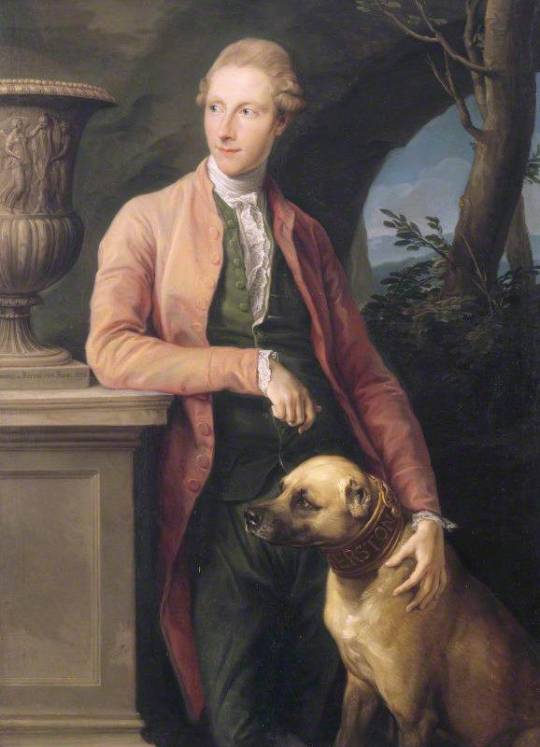
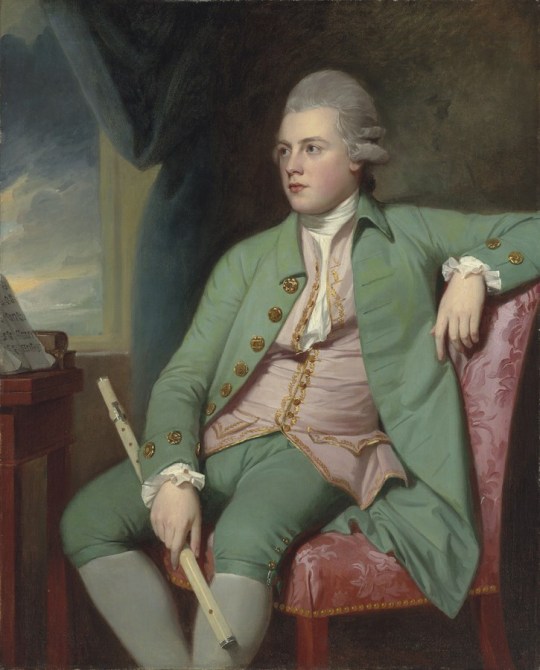
[Left: Sir Harry Fetherstonhaugh, oil on canvas, c. 1776, by Pompeo Batoni, via Wikimedia.
Right: Francis Lind, oil on canvas, c. 1775, by George Romney, via Mackinnon Fine Art.]
Fashionable Englishmen were also inspired by these French designs. Horace Walpole refers to the popularity of the colour combination writing to Lady Ossory on the 19th of February 1774 "If I went to Almack's and decked out my wrinkles in pink and green like Lord Harrington, I might still be in vogue". Almack's is referring to Almack's Assembly Rooms on Pall Mall which is believed to be the inspiration for the Macaroni Club. (see Pretty Gentleman by Petter McNeil p52-55) In a letter to Lord Harcourt on the 27th of July 1773 Walpole writes of "Macaronis lolling out of windows at Almack's like carpets to be dusted."
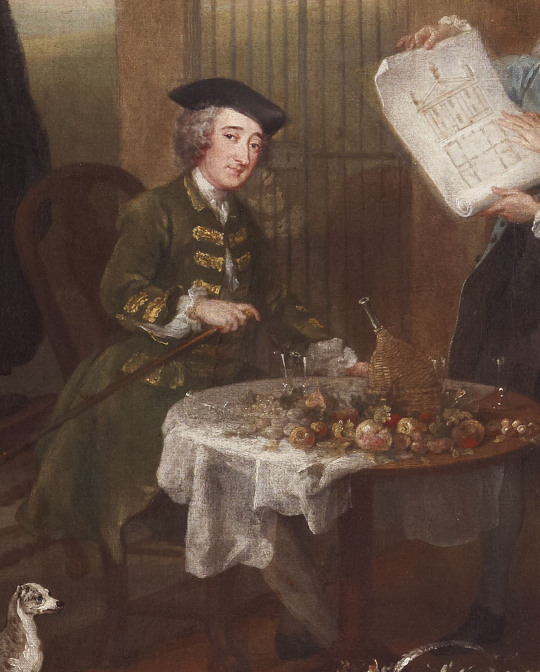

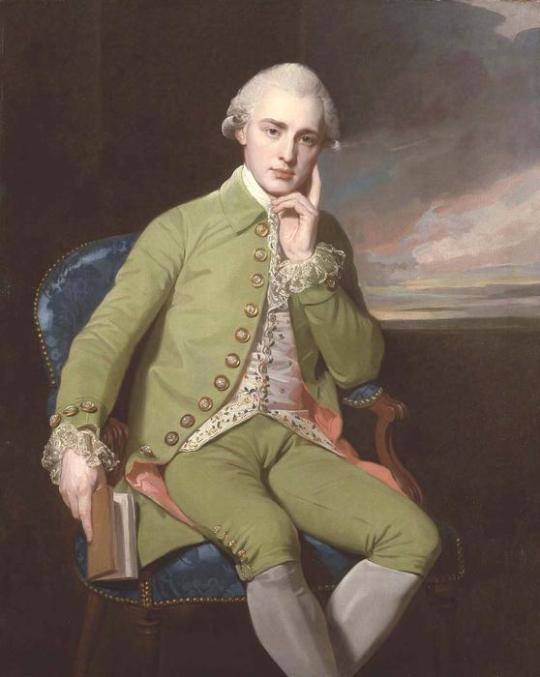
[Left: Detail of Stephen Fox from The Hervey Conversation Piece, oil on canvas, c. 1738-40, by William Hogarth, via Fairfax House.
Middle: Sir William Jones, oil on canvas, c. 1769, by Francis Cotes, via Art UK.
Right: Portrait of a Gentleman, oil on canvas, by George Romney.]
Men who wore green seem to have been just as much, if not more, at risk of being ridiculed, or even assaulted, for the colour of their clothes as those who wore pink. In Pierre Jean Grosley's A Tour to London (originally published 1772) he recalls traveling with a young English surgeon who was harassed by Londoners due to his green French frock coat:
At the first visit which he paid me in London, he informed me, that, a few days after his arrival, happening to take a walk thro' the fields on the Surry side of the Thames, dressed in a little green frock, which he had brought from Paris, he was attacked by three of those gentlemen of the mobility, who, taking him for a Frenchman, not only abused him with the foulest language, but gave him two or three slaps on the face: "Luckily, added he in French, I did not return their ill language; for, if I had, they would certainly have thrown me into the Thames, as they assured me they would, as soon as they perceived I was an Englishman, if I ever happened to come in their way again, in my Paris dress."
230 notes
·
View notes
Note
Are there any notable taxidermists that aren't spoken of often in history? Like women or POC who aren't talked about due to the trade being dominated mostly by white dudes?
Sinclair Clark - African-American hide tanner known for being one of the best tanners in the industry. Tanned most of the animals in the National Museum of Natural History and the racehorse Phar Lap.
John Edmonstone - African slave born in Guyana who learned taxidermy from a plantation owner. He was Charles Darwin's mentor.
Art Ledger - Noted as the first African-American to own a private taxidermy business. Founding member of the Ohio Taxidermy Association. He's currently still teaching and converted his former shop into the International Village Wildlife Museum.
Carl Cotton - Self-educated African-American taxidermist who was one of the first professional Black taxidermists in the states. He contributed to the majority of the dioramas at The Field Museum from 1947 to 1971.
youtube
#ask#there's a lot more!#I try to keep up with the non-white dudes in the community lol#vulture culture
191 notes
·
View notes
Text
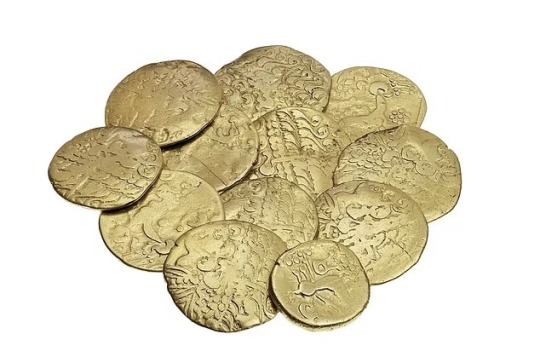
Britain's Oldest Gold Coin Hoard Discovered
The oldest hoard of gold coins in Britain, dating back 2,173 years, was discovered by a metal detectorist.
The 12 Iron Age artifacts were discovered by Stephen Eldridge while scouring fields in Buckinghamshire.
They were built in 150 BC by a tribe in what is now Picardy, France, according to experts at the British Museum.
According to speculation, the coins were likely transferred to Britain in return for Celtic mercenaries who were sent to Gaul in western Europe to fight the Romans.
A hoard from this date is extremely uncommon, even though individual gold coins from this era have been discovered before.
The coins will now likely sell for £30,000 when they are put up for auction at London's Spink & Son.
In November 2019, Mr. Eldridge, 68, discovered the coins in the Buckinghamshire community of Ashley Green.
The Catuvellauni tribe first settled in the region about 150 BC, and during the ensuing century they grew to become the most dominant tribe in Britain.
Mr. Eldridge has put the coins up for auction with London-based coin specialists Spink after going through the treasure process.
The coins' roughly 75% gold content with an alloy of silver and copper was validated by scientific x-ray fluorescence analysis, indicating the economy in which Britain's first gold coinage were circulating.
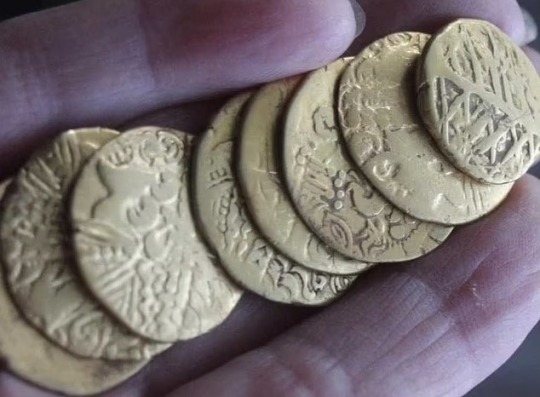


The coins are now expected to sell for £30,000 when they go under the hammer at London auctioneers Spink & Son
Gregory Edmund, of Spink & Son, said: “Whilst individual gold coins of this period have been recorded across south east England, it is incredibly rare for a trove of this size or date to be uncovered. Contemporary local coinage was simply cast base metal issues called 'potins'. Whoever successfully imported this trove of gold coins would have undoubtedly wielded influence in the region.
They would have been exported, probably in exchange for mercenaries, equipment and hunting dogs to fight the Romans or other tribes in Belgium. Twenty or thirty years after they were deposited we started to get the first British coins in the same style. These coins were in the wealthiest part of the English kingdom. A hoard of this size and period is unprecedented in the archaeological record. There was one other hoard from this period of three coins found. These coins have been well used, it is very clear they are not fresh when they are put in the ground, but still retain remarkable details of a seldom-seen Iron Age art form.
It is often speculated that the portraiture of this coinage was deliberately androgynous despite being modelled on the classical male god Apollo. The feminine styling is probably a reflection of the political significance of women in Iron Age society, that enabled such historical figures as Cartimandua and Boudicca to rise to prominence and our now national folklore. It is incredibly satisfying to assist in the proper recording, academic analysis and now sale of these prestigious prehistoric relics.”
Following the coroner's inquest, the British Museum made the decision to disclaim the coins, which means they now belong to the finder.
The landowner will receive a portion of Mr. Eldridge's earnings.
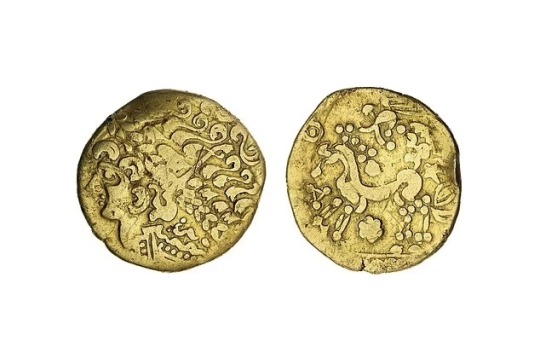
#Britain's Oldest Gold Coin Hoard Discovered#Buckinghamshire#The Catuvellauni tribe#treasure#gold#gold coins#ancient gold coiins#ancient artifacts#archeology#archeolgst#metal detecting#history#history news#ancient history#ancient culture#ancient civilizations#iron age
230 notes
·
View notes
Text

Changing Face of Science exhibition highlights ‘Punk Rock Paleontologist,’ Field Museum Dino Curator Jingmai O’Connor, PhD
Changing Face of Science is a series that highlights women and/or scientists of color who are breaking barriers in their field to challenge the typical idea of who can be a scientist.
The show shares O’Connor’s path to science while highlighting her passions outside of paleontology, including music and sustainability. It features pieces from O’Connor’s personal collections, including her childhood sketchbook and replica antiques purchased in Chinese markets. It also features fossils related to her research, like a cast of prehistoric bird Qiliania graffini signed by Greg Graffin, evolutionary biologist and lead singer in Bad Religion, for whom O’Connor named the species.
via FieldMuseum.org
#dinosaurs#dinosaur#paleontology#prehistoric#fossils#clever girl#science#Qiliania graffini#jingmai o'connor phd#field museum
292 notes
·
View notes
Note
Good luck on the job application! I know you probably can’t (or don’t want to) describe what it is. Hopefully it’s full-time at least! Every time I remember that someone works multiple part-time jobs, I want to give y’all 40 hours and a salary and health insurance.
Thank you! It is indeed full-time. I really, REALLY hope I get it.
Sadly, my situation is not rare in the museum world. There are plenty of thirtysomething museum workers- some with advanced degrees; some like me who don't have a Master's but do have years of practical experience in the field -who are cobbling together part-time jobs to make ends meet.
Something something field that used to be run and staffed entirely by volunteers- wealthy retirees, single heirs to family fortunes (often queer), and married women whose husbands had lucrative careers -now full of people making it their living, but a lot of the higher-ups don't realize or respect that, something something
(which is absolutely NOT to discount those people's contributions! but the landscape used to be radically less "this pays my bills," and due to the gender roles of the time, the Spouse Makes The Money couples tended to involve a man bringing home the bacon)
#ask#museum work#greatpoetryfun#there are still a lot of Spouse Makes The Money couples in the museum world. just now many of them are gay
57 notes
·
View notes
Text
he had to hurt her like that, look at the cinema he made. did he? how do you know? the ends justify the means, huh. a woman could never actually act this well, it had to be real, a snuff film. yes, she was hired for her talent - but pain will make the talent brighter, right.
he is not alone. there are men around him who think like this. who choose actresses they can manipulate, exert power over. who write scripts that demand the pain be felt. she must hurt to uphold the message.
(an aside. author's note, i guess. in poetry, when the words cannot hold themselves up, we actually blame the writers. it shouldn't matter who speaks the literature. the words should carry their own weight. be their own scaffolding.)
the men in the room all applaud each other for doing less. they say they push boundaries. they're leaders in their field. they ask the hard questions.
when they get your resume, they put it into a pile that they will put into a trashcan. when they get your screenplay, they will use it as a coaster. when they build their museums, they will have a disjointed room dedicated to "repairing" the ways that women and people of color have been eradicated from "fine arts". it will be self-effacing. we may have overlooked some artists, they apologize. but really it's not our fault that white men make better art. (those men and their works are in permanent displays. for more on this, see: the way that he laughs at your work will make you sick to your teeth). in six weeks, their apology will be scrubbed and the room will be scrubbed and all the paintings will go back into storage.
they know they are right. sure, okay. maybe we have had less opportunities. but what would we have done with them? not something like this. it took a man to do this. okay, okay. it was deranged, we can all agree about it. but look at the product.
in your life, when you wake up, isn't it grand. if they made a museum for people like us, it would be a cycle of empty frames. of ruined videos. of songs with a voicecrack. all the little plaques reading some variation of a theme. here is where my work would stand if someone like me could actually get published in this fucking industry. here is the work i tried to make, before my agency was stripped from me. here is the placeholder of my dreams, but i could not afford them in this society.
if you keep walking, out in the greenhouse out back, the whole world is full of color. every fabric and fortuneteller and feverdream we spat out in despite. centuries of brightness, of novelty, of exploration. of talent, of wisdom, of creativity.
there is only one sign here in this alexandrian library. the sign acts like an epitaph. you already know what it says, don't you. THIS ISN'T ART, it tells you.
the blankets. the chef-level 5-course meals. the carefully-colored journal pages. the abandoned works-in-progress. the library of fanfiction. the margin drawings. somewhere in there, an actress makes a face, and you think - oh shit! she's really broken! but then she smiles at you, winking. she could do it, you know. she could always act like a starbeam. it's just that his name is the one scrolling at the bottom. she hadn't wanted to undress for him. she goes home and gets forgotten. in our museum, another blank frame goes up on the wall.
they'll give him an award, looking to the camera with almost an apology. he will laugh ruefully. nobody will do anything. little white strings will drip from his fingers. young boys in film studies will continue to chainsmoke while explaining how beautiful it is that there's violence in those scenes. she couldn't have done it without him pushing, he'll tell you, shrugging.
but what if, you wonder. what if he had never existed? without him, what else could we be making? all that time and love and spirit, allowed back into the light. into knowledge. what has he taken, to give us his art?
and is it a trade worth making?
#spilled ink#warm up#can you tell i've been playing disco elysium#no spoilers please i just started#im on day 2#i don't think im like GOOD at DE tbh#im like too straightedge and i hate being a cop so the game was like#''why are u so apologetic about being a cop''#and im like BC I FEEL BAD ABOUT BEING A COP!!!!!!#although tbh i would like to. confess my love for my little orange guy#kitsuragi#...... i know he's gay without knowing he is gay. im SO confused about so much about this game but im like#that's a gay man
725 notes
·
View notes
Text

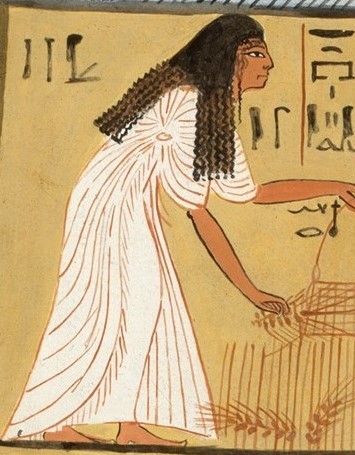


Sennedjem and Iineferti in the Fields of Iaru - Met Museum Collection
Note: This is a modern copy of an original
Inventory Number: 30.4.2
Original Dating: New Kingdom, Ramesside, Dynasty 19, ca. 1295–1213 B.C.
Location Information: From Egypt, Upper Egypt, Thebes, MMA Graphic Section, 1922; Original Deir el-Medina, Tomb of Sennedjem (TT 1), PM plan (9) I–IV
Description:
The east wall of Sennedjem's vaulted crypt is decorated with a vignette that illustrates spell number 110 in the Book of the Dead. Here, in a facsimile painted in the tomb, Sennedjem and his wife, Iineferti, are shown harvesting grain, sowing seeds, and pulling flax in the abundant fields of the next world.
#Sennedjem and Iineferti in the Fields of Iaru#new kingdom#ramesside#dynasty 19#upper egypt#thebes#deir el medina#deir el-medina#tomb of sennedjem#met museum#30.4.2#womens clothing#NKRWC
1 note
·
View note
Note
handshake meme: museum workers 🤝 education paraprofessionals. I have an MLIS with an archives focus, and I was an education para while I got my Masters. God I feel you so hard on the assumption that the work is just something people do for fun while their husband spouse works a well-paying full time job with benefits. I know someone who in the 2010s earned $14k/year as a full time education para. And I'm in the same hyper-expensive metro area as you! It's insane and the gender dynamics of it all leaves such a sour taste in my mouth. These are real jobs. It's horrible what people can get away with when it comes to fields that everyone assumes will just be full of well-off women (who...would still deserve a living wage, actually)
It’s absurd! The paras in this town make HALF of what I do while probably doing twice the work. There was even an article in the paper about it. This is supposed to be one of the best school systems in the state and they are actually failing on so many levels.
34 notes
·
View notes
Text
I did a tour of GO filming locations
It was around London, so I didn't get all of them, but the trip has been such a blast I just have to share the pics!
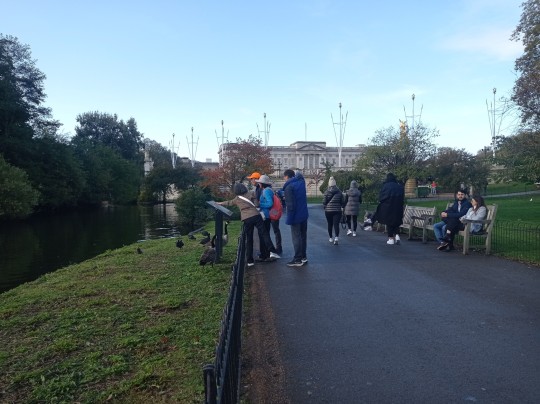

1. St James park: so many birds! And tourists. Which is good because the secret government agents wouldn't be able to feed so many ducks. I saw pelicans too—they were huge and pink and funny!!
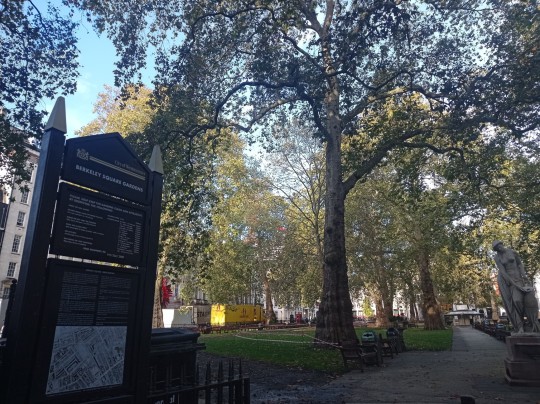
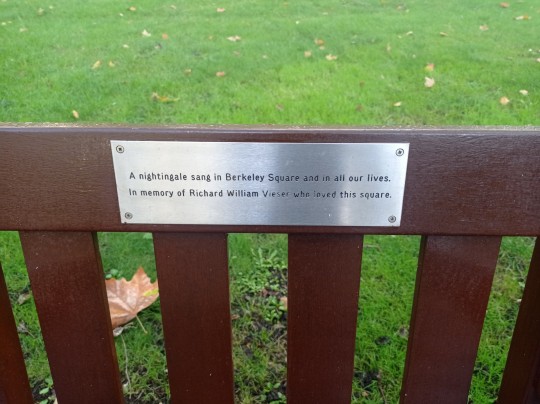
2. Berkley Square (they actually didn't film anything here, but still): it's a giant construction site now. The only birds I spotted were parrots, so many of them, at least 5 nests, and loud too. No sane nightingale would ever come there, this much is true. But the song is referenced on one of the bench plaques <3

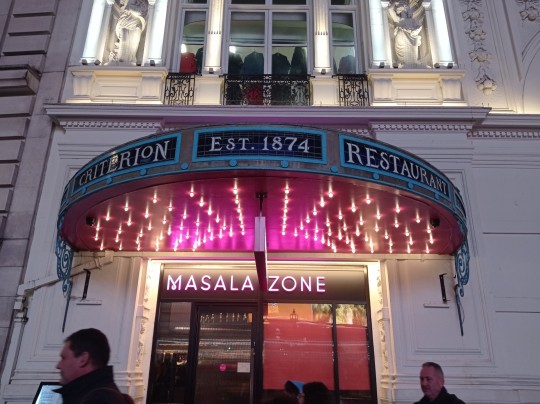
3. The Ritz / The Criterion: they both look nothing like the restaurant in the show (maybe the Criterion changed since 2019?) But both are fancy! When my rich uncle leaves me a giant inheritance and I find my 6000 year soulmate, I am so taking them out there, just you wait.

4. The Globe: this is my favourite theatre now!!!Macbeth was magnificent! And the standing tickets were so worth it: actors were down in the crowd and interacted with everyone! I got some of Macduff's blood on me! (Can't get this anywhere else :D) The Globe is closed in winter, so I'm already planning to buy tickets for next year.


5. The Bandstand and the-place-where-Gabriel-was-running: after marinating on Tumblr for so long I felt shocked seeing the word "bandstand" on a physical sign in the park. Like, put up a warning at least, my heart needs to be prepared?? The actual bandstand was at the same time smaller and bigger than I expected. Also those red bits—apparently they were there the whole time; I was imagining it black and white for some reason.
Also I met another crazy fan taking pictures of the bandstand in the rain, and I remember thinking, they have to be just as crazy as me xD

6. Tavistock square (where they switched bodies): the filming crew must have moved the benches around, because the square itself is so tiny and you can only match the scene background if you stand all the way back in the bushes. Surely there must have been a better way.


7. Crystal palace: just as I suspected, you can't see the dinosaurs from the bench because of all the trees in the way. The dinos are hilarious though, they look more like🗿and not like 🦖. In the show Warlock seems to have written a rude word on the teleosaurus info card, how dare he!

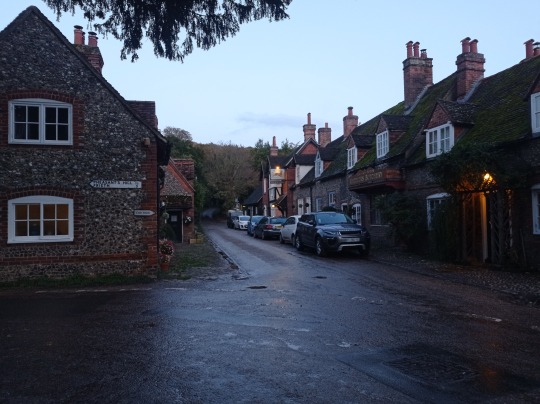
8. Tadfield (Hambleden, really): I thought, it's just two hours from London, easy day trip, in and out, what could go wrong. Cue to me stumbling over muddy fields in the dark surrounded by menacing sheep and regretting everything. The village is cute and English and has literally three streets and a post office and nothing else. And sheep.

9. Bonus round, my take on Aziraphale's bookshop xD "Seducing women? I think you've got the wrong shop!"
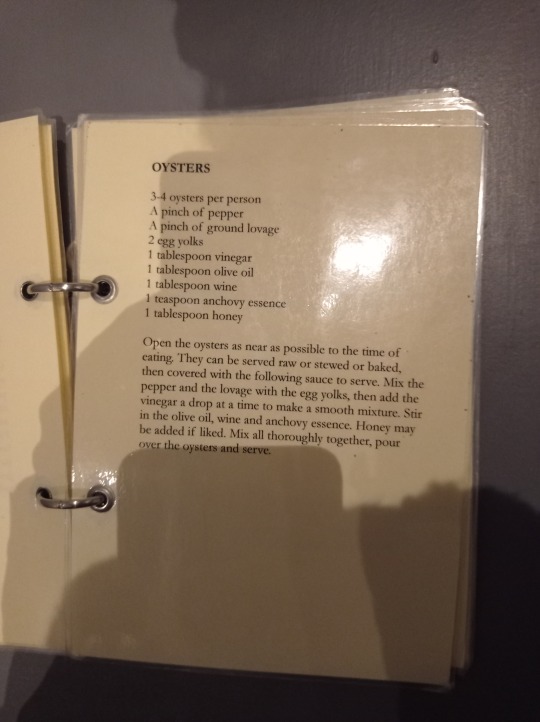

10. Bonus bonus round, food! (am I or am I not the ace of snacks after all?) An oyster recipe from Marcus Gavius Apicius' cookbook (Rome, 1c CE, stumbled upon it in the museum of Reading), and Eccles cakes (soooo sweet they don't calm people down but give them instant diabetes)
And that's it!! Thank you for reading all the way <3 Here is a secret snack 🍎
64 notes
·
View notes
Text
What I think the demigods would major as and why
these are personal head canons dont take them too seriously :)
Percy: Education. I know that we usually hc as a Marin biology kinda guy but I genuinely think that he wouldn't be too fond of the workload but instead want to work towards being a teacher and being the kind of teacher he needed as a kid, y'know? Alternatively, I can see him being into something like baking and pastry art to take over Sally's shop.
Annabeth: Architecture. I really don't think I need to explain this one to y'all but yeah she's an architecture girly. But if we want to branch out I can also see her studying law and working in the area of Child Protection.
Leo: Astrophysics. I have this head canon of him panicking because of the sheer amount of choices that he's presented with and choosing the first one of the alphabetical list. Lucky for him, he's insanely good at it AND it'll pay well in the future. He minors in mechanical engineering and realises that although he has all the practical knowledge because of his father, his theoretical knowledge isn't as strong lol.
Piper: Food Science. I'm trying to be unique here because yeah, she could do environmental studies but I also think it would be super cool to see her learning about food and developing new vegetarian versions of food because it's something she's visibly passionate about in the books.
Nico: I can see him getting a history / philosophy related degree for his bachelors just for him to get a doctor of philosophy (Ph. D.) in mythology or folklore. His hyperfixation runs deep and he sure as hell is going to fuel it as much as he can.
Jason: Doesn't go to college!! Is severely burnt out <3. No but like idk man I think he'd legitimately want to take it chill if that makes sense? Maybe he'd do a business major just so that he can get a job somewhere but I can't think of somewhere he'd fit in nicely. Jason does have a lot of part time jobs though!!
Frank: Nurse! Nursing school! Despite being the son of Mars I can see him being in the medical field because he wants to help people in need. It's a long journey with lots of ups and downs but finally getting his degree makes it all worth it.
Hazel: Geology because rocks. And also women in STEM!! This one directly correlates to her powers in the books as well as both of her parents! On the other hand, I can see definitely see Hazel studying in the field of archeology with the goal of being an archeologist and then eventually a museum curator :)
Reyna: Psychology!! Listen, I know this seems out of the blue but Reyna gives me the right vibes. Everyone is skeptical at first because they don't think she'd fit the mold of a clinical psychologist but that's okay because Reyna wants to further herself in research! She studies Neuropsychology and becomes a prominent researcher in her field! Please tell me you see the vision.
Will: From what I can see in the books, Emergency Medical Services degree seems like the right field for him. He's already basically a paramedic at Camp Half Blood so he knows it's naturally the right step for him. On the other hand, for something a little different - he seems like the kind of guy who might be interested in studying cinematography or art history maybe.
Travis: He studies Economics because he's so fucking convinced that he can become the next Elon Musk if he studies this. Alternatively, he studies music because he wants to travel the world and like sing with the wind and all that shit.
Connor: he's a communications major because he's a really popular youtube and technically doesn't really need to go to college but oh well he can study communications.
Drew: She goes to cosmetology school as the first step to start her own makeup and skincare empire. She's super nice to all of her clients and helps out all of the other students when they're having trouble with something! I will not tolerate any Drew slander let my girl breathe.
Pollux: Chemical Engineering. He got influenced by watching breaking bad and somehow landed himself a degree in chemical engineering. He doesn't know how he survived that degree but it doesn't matter because he decides to not give a fuck and open a coffee shop that becomes really popular because all the drinks are to die for.
Thalia: I don't really know the right terminology but she has an art related degree / tattoo apprentice so that she can work as a tattoo artist!! It fits with the thalis vision and also she is the eldest daughter who loses it lowkey so she doesn't follow your usual education route. Tattoo artist Thalia for the win!!
#pjo hoo toa#percy jackson#annabeth chase#leo valdez#piper mclean#nico di angelo#jason grace#hazel levesque#frank zhang#reyna ramirez arellano#will solace#travis stoll#connor stoll#drew tanaka#pollux#thalia grace#pjo headcanon
242 notes
·
View notes